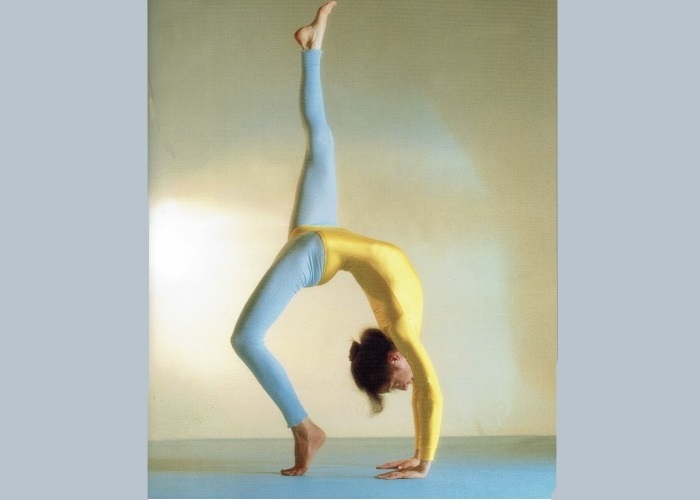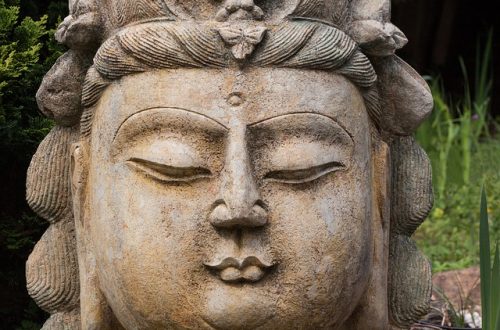
Chakrasana, cakrāsana – the wheel pose
With the Yoga Online Exhibition, I would like to encourage you to explore the question of how the beauty of the human body is created.
In order to let the expression of each individual pose have an effect on you with a few thoughts, you will find each photo listed individually here in the Asana Quotes section, together with a short text. The texts are dedicated to different aspects of the deeper meaning of yoga practice. Anyone interested in learning these beautiful postures, should consult a competent yoga teacher to avoid mistakes in practice!
cakrāsana

Wheel pose with leg variation, the raised leg striving upwards with great ease
Swami Vishnudevananda on the human body:
Although the physical body¹ is on the lowest rung and is the materially grossest of man’s manifestations, it is the most essential principle for man’s growth in each stage of development. The body, therefore, as the temple of the living soul, should be carefully cared for, for its function is that of perfection.
If we look around us, we see that the physical body image of all the many different human beings shows different stages of development; moreover, some are strong, some weak, some spindly, others fat. It should be the duty of every human being to develop his body to the highest perfection in order to be able to fulfil his spiritual purpose.²
Note and text source:
(1) In yoga philosophy, the invisible limbs of the human being are also called “bodies” and are thus accessible to a more concrete conception. Swami Vishnudevananda sets out the elementary division of the following three bodies:
sthūla-śarīra: the gross, physical-material body, consisting of the five elements earth, water, fire, air and ether.
sthūla = gross; that which can be touched, material.
śarīra = body; that which supports.
sūkṣma-śarīra: the subtle, delicate body; (roughly equivalent to the soul) and consists of 19 elements, the five organs of action, the five pranas (the forms of breath), the five organs of perception and the four principles of mind, namely, thought principle, intellect, subconscious and ego.
sūkṣma = fine, delicate, thin.
karaṇa-śarīra: the causal body or cause-body, that which is the cause of the other bodies; (roughly corresponding to the mind). Through this body, the soul experiences the effect of a good deed and has the experience of happiness.
karaṇa = to do, to make, to cause.
(2) Swami Vishnudevananda, The Great Illustrated Yoga Book, Aurum Publishing House 1997, p. 22ff
Picture credits (19-05-30): Woman image by Sasin Tipchai on pixabay, Wheel pose-The Sivananda Yoga Center, New Book of Yoga, Vintage/Ebury Publisher 2000, ASIN B01FKT3YRG, p. 127



